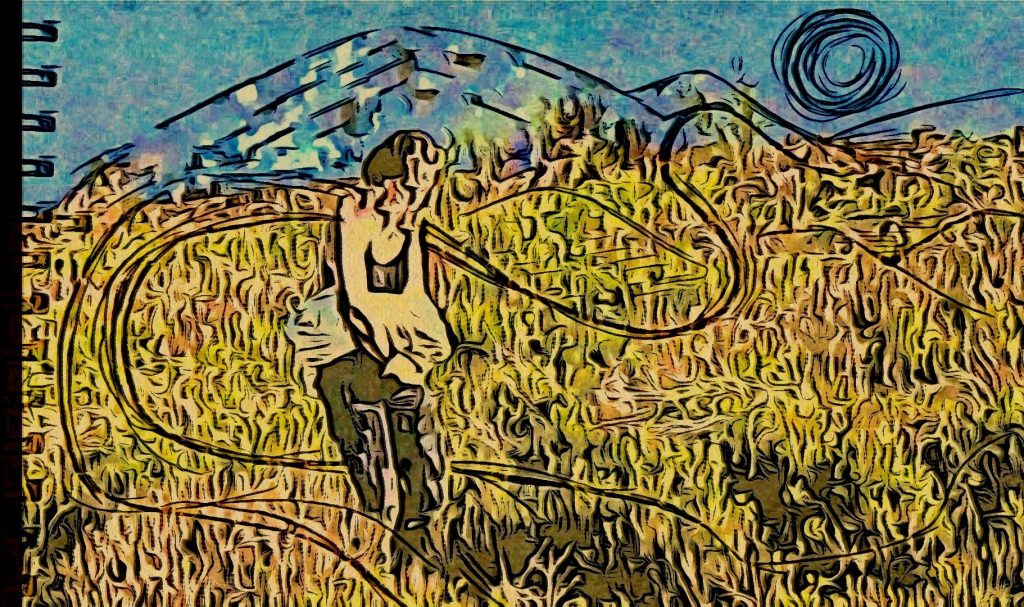
Deciding to change my piece from being performed in a theatre space to being performed as a journey through the moors was the first step in making the performance for myself rather than for an audience. I was happy with this format because it meant I didn’t have to explain myself to the audience; I no longer needed any projections or audio that would give the audience an insight into my life. Instead, it meant that audience members could draw their own meaning from their own lived experiences from the performance, and I could keep my meaning personal. However, it was still important for me to have some personal symbols in the performance.
Symbols
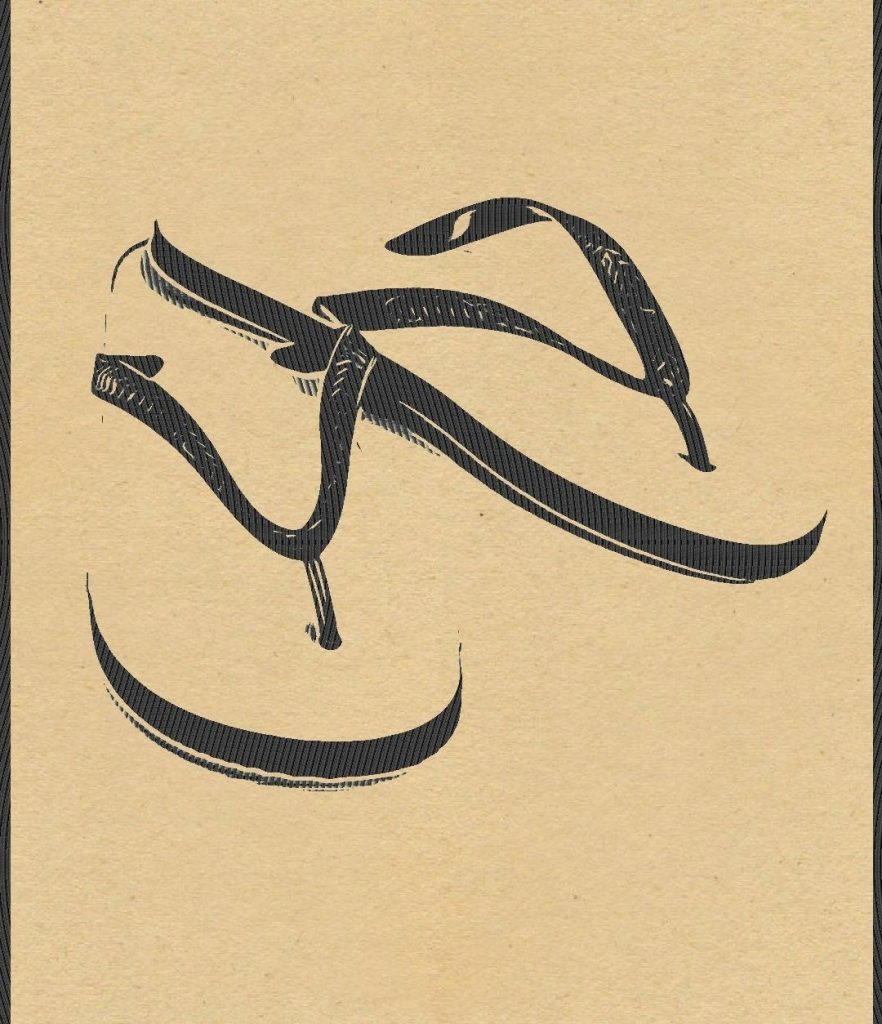
These symbols came in the form of flipflops and Mokorotlo earings. I chose to wear flipflops because as a child, I only wore flipflops, and if I wasn’t wearing flipflops, I was bare-foot. Flipflops now hold a certain amount of nostalgia for me; they make me think of warm weather and red dust-like sand.
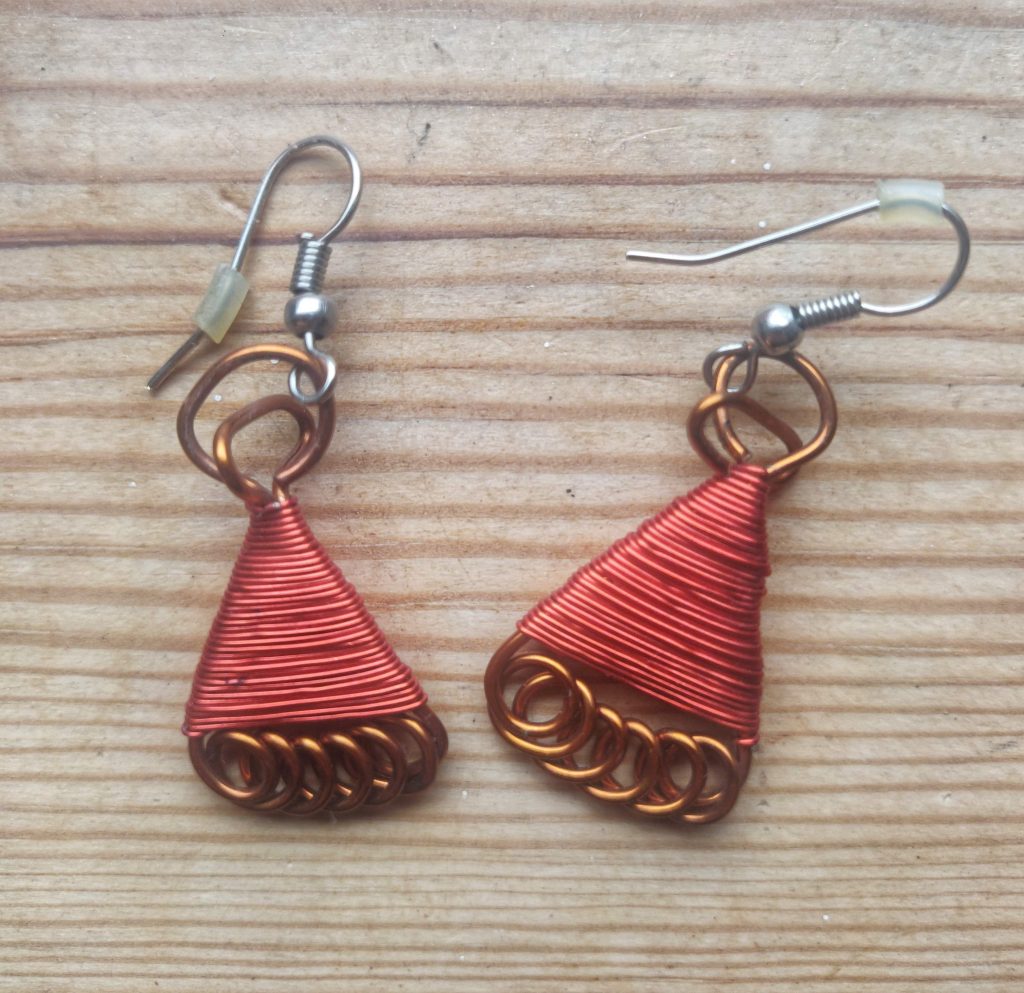
I chose to wear Mokorotlo earings because of the cultural significance of the Mokorotlo hat in Lesotho. The Mokorotlo earings are small versions of the Mokorotlo hat which is part of the Basotho traditional dress; I chose this specific aspect of Basotho traditional dress because Mokorotlo is so ingrained in Basotho culture from it being on the Basotho flag to it being a part of everyday life. It also felt fitting as the Mokorotlo hat is inspired by Mount Qiloane in Lesotho which was a big part of my childhood learning about King Moshoeshoe, Thaba Bosiu and Mount Qiloane. It was also a way of bringing the Basotho landscape into the North Yorkshire moors where the performance took place.
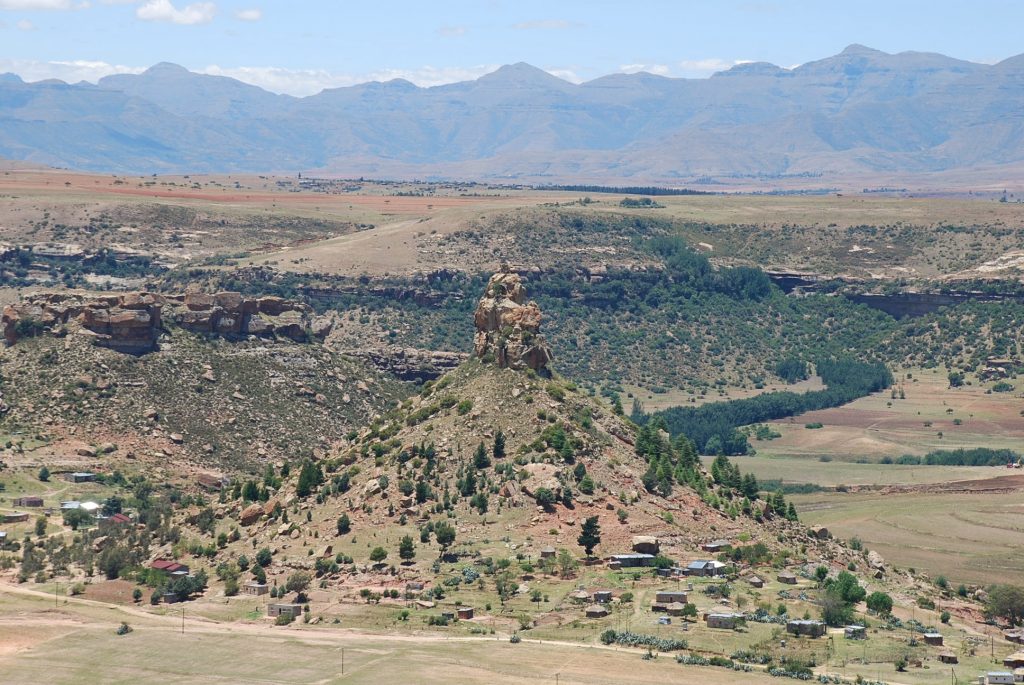
(Anon,2015) 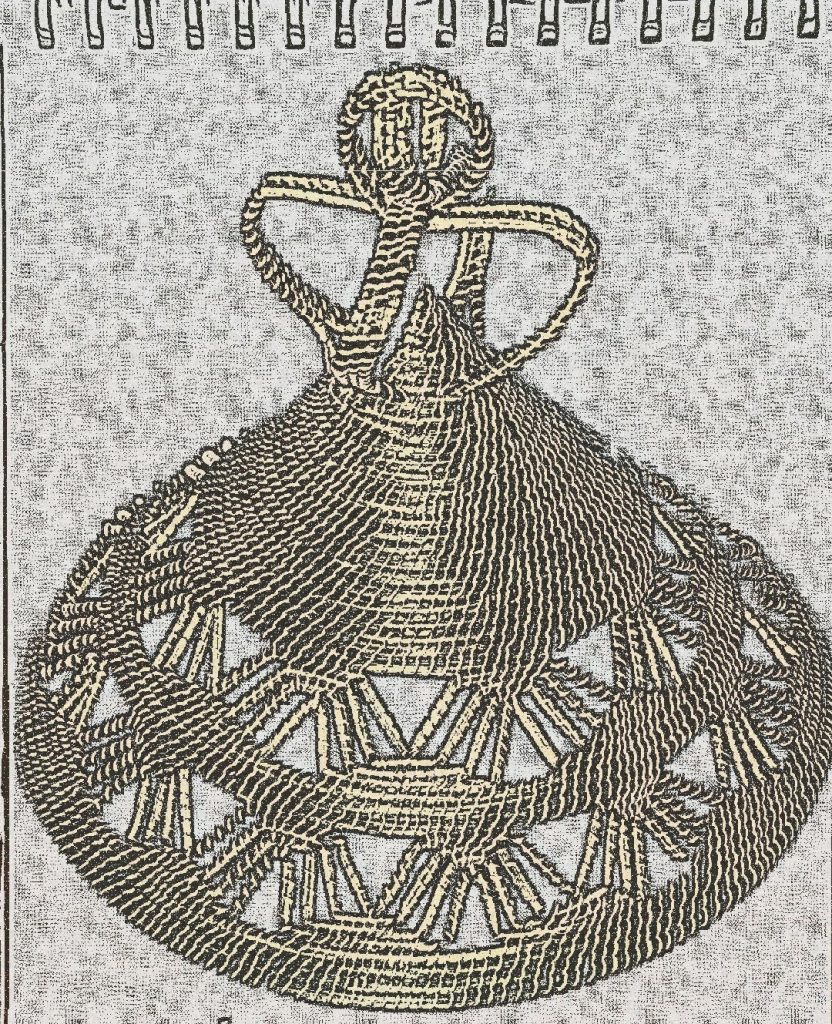
Litema pronounced ‘di-te-ma’
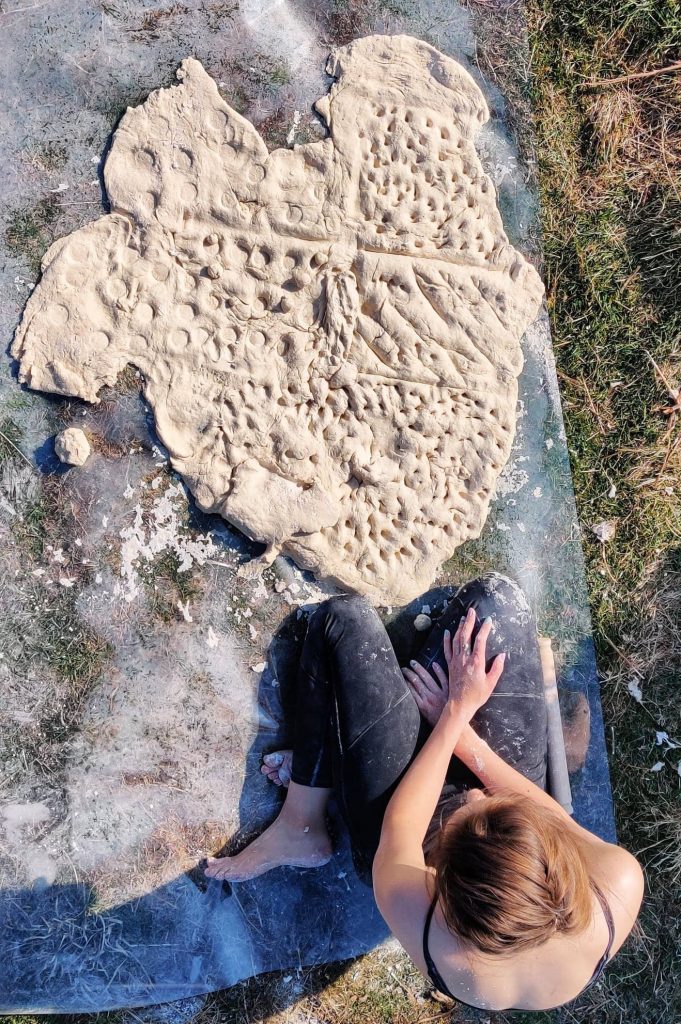
During the performance, once I have made my dough, I roll it out using my body, and I make patterns on it. These patterns are called Litema; they are a traditional form of decoration in Basotho culture as Rudi De Lang says, ‘It is a tradition where women decorate a house… these highly decorative designs are soft and flowing geometric patterns that are applied with fingers, forks and sticks on the walls of houses.’ (De Lang, 2020) I wanted to include this in my performance to symbolise ‘home’, I decorate the dough (my house) before rolling it up and carrying it around with me. I liked this image as it shows my transient life – always having to move while growing up, but at the same time shows that I am bringing my Basotho culture with me wherever I go.
Why carry dough on my back?
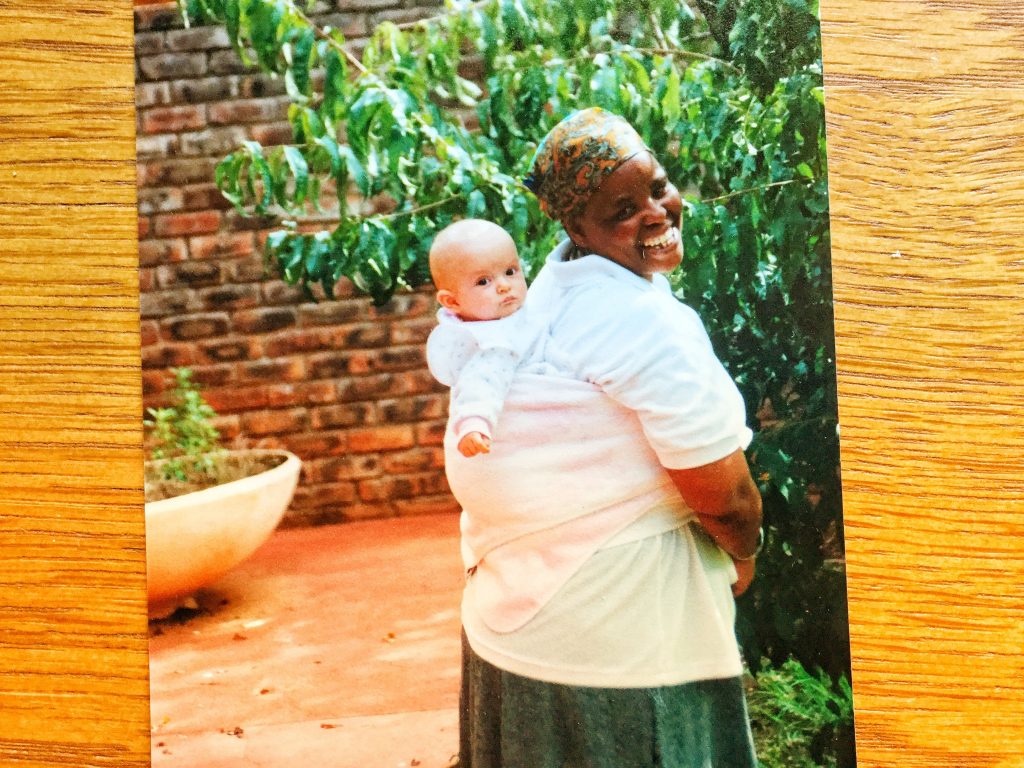
Clem and me and a baby 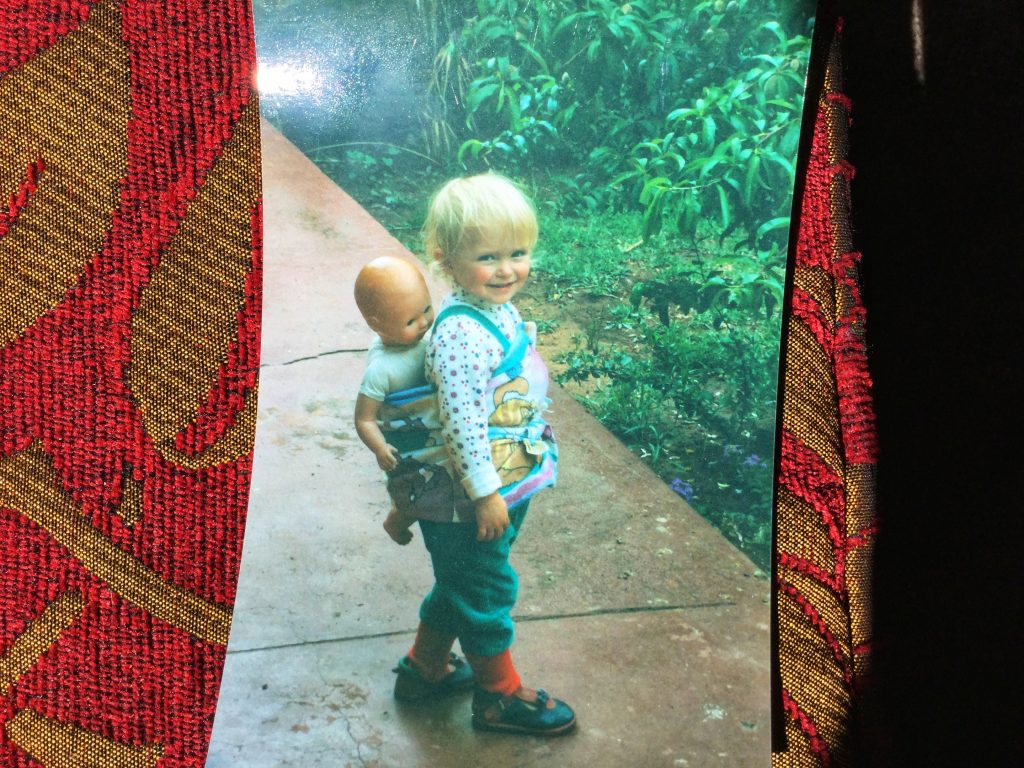
Me age 2 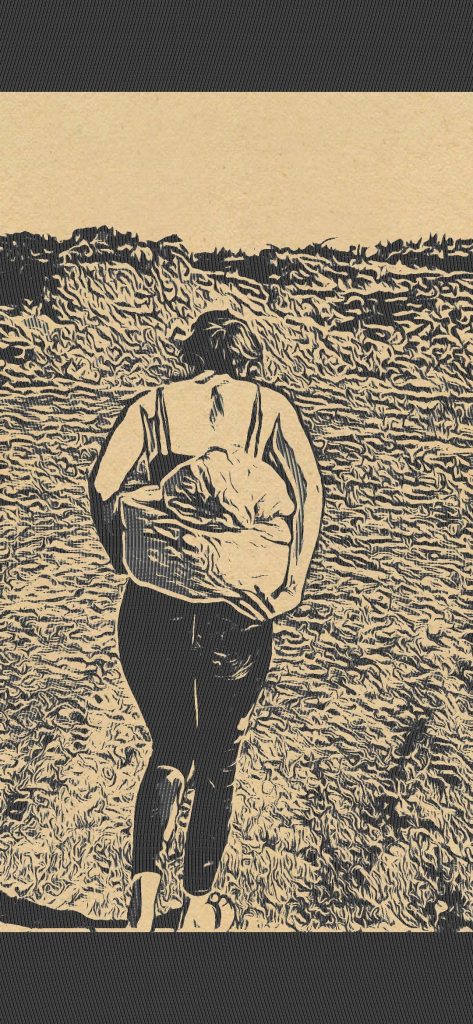
Print by myself of me carrying dough
One of the most important images in the performance is the image of me carrying the dough on my back; this is an image that continuously reappears. The reason for this is because, in Basotho culture, this is the way babies are carried by their mothers. This was the best way I could represent Clem in the performance; she carried me on her back when I was a baby and taught me to carry my dolls on my back too. Carrying the dough throughout my journey in this way was symbolic of Clem but also extremely practical due to the weight of the dough. Me carrying the dough in this way could also symbolise me as a woman and the way I want to bring my own children up one day, with an understanding of the culture that has shaped me as a person.
The Music
When it came to creating the virtual performance, I decided to add music to the video. The reason for this was I felt I wanted to add more elements of my current life to the performance, so it wasn’t just focused on my past. At the moment when I think of what I currently have that is as close to home as possible, I think of my partner Kristian and my two dogs. I felt it was only right to add this element into the performance because they are part of my current journey and identity. I did this by creating a piece of music with Kristian; I wanted something that didn’t draw too much attention away from the dough making but was always there in the background. I wanted to create this with Kristian and myself both singing because I felt it added a comforting, supportive element to the performance. It is intentional that the song doesn’t have any lyrics but instead just has the sound of voices. I did this because I don’t want to have to explain to people what I’m feeling; for the same reason, I don’t perform a monologue while I’m making the dough. I want people to use their own experiences, not mine to draw meaning from the performance.
The journey
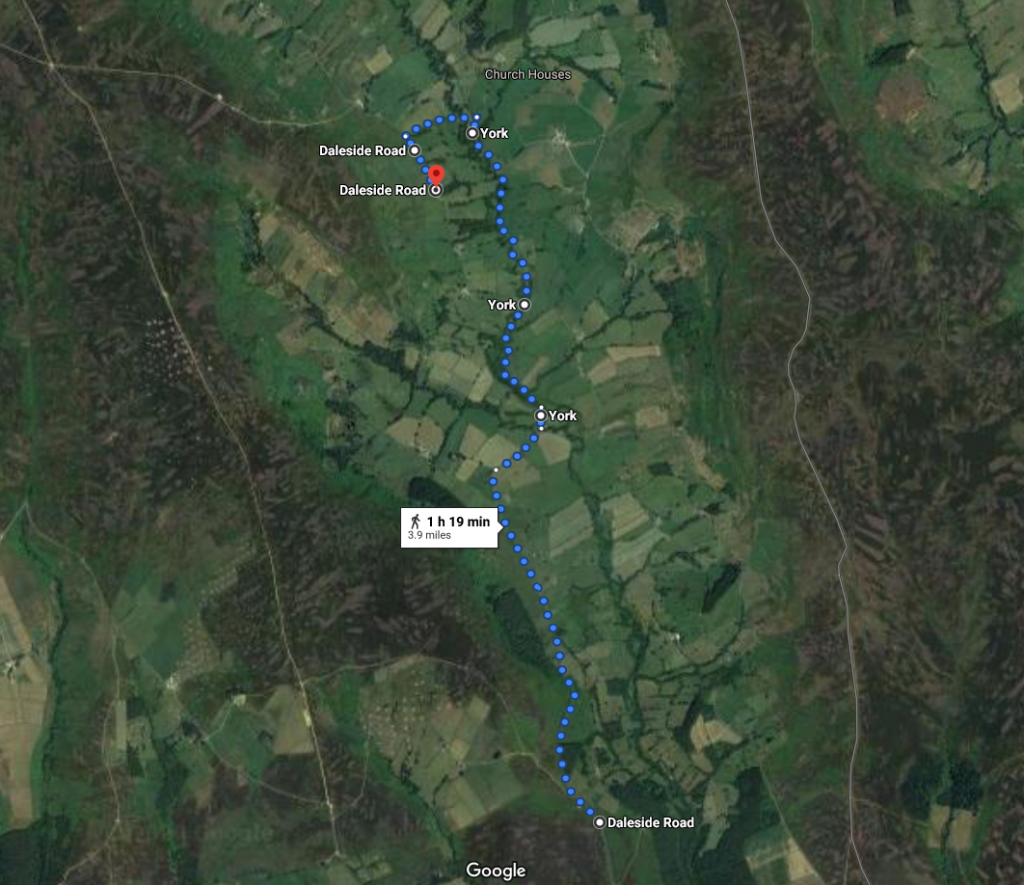
I chose to perform my piece as a durational performance, where I made 25kg of dough and then carried it around the North Yorkshire Moors, the whole performance lasted 5 hours. I chose to perform in the North Yorkshire Moors because it is where I currently live; it also has a landscape that reminds me of Lesotho. I wanted a hot day to perform so the weather was similar to the climate in Lesotho and the heather and dry grass in the moors were similar to the bushes and shrubs native to Lesotho.
As the journey of carrying the dough was so long, I walked through many different types of landscape starting in the moors, then going through fields, woodland, and walking along a road. I planed this route specifically because of the different landscapes as I felt this would signify being transient and travelling through different places. This was also important for recording the video of the performance because it helped show the passage of time during the walk, and helped reinforce the feeling of a long journey.
When planning the route I would take, I also chose one that was no longer than one and a half hours long as I knew it would take me a very long time to walk while carrying such a heavy load. My planned route was also intentionally not a loop, I wanted to end in a different place from where I started because that is where my life is up to at the moment. I don’t know what the future holds; I only know where I am now, and it is a different place from where I began my journey. The live audience is also only privy to the beginning of my journey; they followed me along my journey until they were asked to stop following. The reason for this was I didn’t want them to see me stop walking, the last they saw of me was me continuing my journey by walking away from them.
This is also reflected in the way the video ends, as I wanted the virtual audience to experience the same feeling. I intend to leave the viewer with a sense of an incomplete journey, I recognise the want for a resolve, but I want people to feel the way I do.
The name of the performance